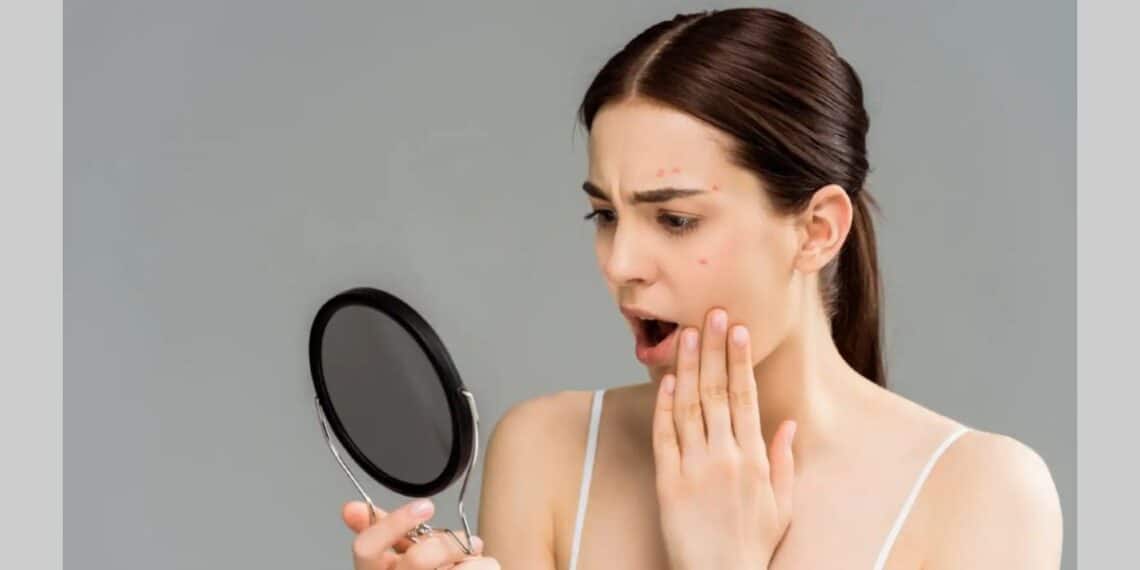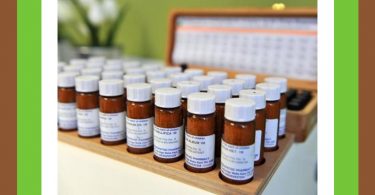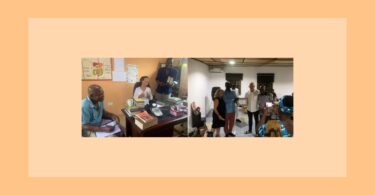ARTICLE
The face of a patient tells a long story, and it will be well for the student to closely observe its features, expression, color and temperature. The experienced physician reads out of it not only the degree of severity of an attack, but often also its whole general nature. But that must be learned by practice. There are shades so fine that they could not be well described, but which nevertheless stamp upon the whole a peculiar character.
The Aspect of the Face
a. A delicate appearance, with long, fringed eyelashes and brilliant eyes, often serves to point out the tubercular diathesis.
b. A wrinkled face is natural to old age, but in children it is a sign of imperfect nutrition, and is found in consequence of exhausting diarrhoea and atrophy.
c. The thickened base of the nose and upper lip of scrofula* are most marked in childhood.(*A form of tuberculosis affecting the lymph nodes of the neck.)
d. The pallor of anaemia is very important; it is waxy in chlorosis and pasty in diseases of the kidneys.
e. A puffy appearance about the eyelids along with anemia is very generally an indication of albuminuria.
f. A sunken face indicates exhaustion, either from too great exertion, loss of sleep, want of nourishment, profuse diarrhoea, or disturbed digestion. If it sets in suddenly during pregnancy, it is a premonitory sign of abortus.
If you find sunken face in the incipiency of a disease, without previous weakening causes, it denotes a severe illness. If it sets in suddenly, during a disease, without chill or spasm, by which it might be caused, it is a sign of extreme exhaustion, collapse, metastasis, mortification, or apoplexia nervosa.
g. The linea ophthalmia zygomatica is a line or fold, commencing at the inner canthus of the eye, running towards the zygoma where it ends. It shows momentarily, when children cry, but becomes more permanent in children with affections of the brain. Its appearance in simple catarrh is said to indicate the setting in of whooping-cough.
h. The hippocratic face is characterized in the following way: The skin upon the forehead is tense, dry, or covered with cold perspiration; the temporal regions are sunken in; the eyelids are pale, and hang down. The eyes are dull, without lustre, turned upwards, and sunken; the alae nasi are pinched together and the nose is very pointed; the malar bones stick out, and the cheeks are sunken in and wrinkled; the ears appear to be drawn in, and are cold; the lips are pale, livid; the lower jaw sinks down, and the mouth is open. It is always a sign of extreme prostration of vital power, and is found in cholera, in mortification, and during death struggle.
i. The linea nasalis is a line or fold, which commences at the upper part of the aim of the nose, and runs towards the orbicularis oris (the sphyncter of the mouth), forming a more or less perfect half-circle. This line, if found in children, denotes abdominal diseases, especially inflammation of the bowels, also rachitis, scrofula and atrophy. In grown persons it is said to have been observed as a concomitant symptom of albuminuria, ulcer, cancer of the stomach and degeneration of the liver.
j. The Uvea labialis is a line or fold, which commences at the corner of the mouth and runs down towards the side of the chin, where it ends, and whereby the chin appears to be elongated. This line is said to be a characteristic sign in children of inflammatory diseases of the larynx and lungs. Very marked it has been found in grown persons who suffered with ulceration of the larynx and bronchial affections, attended with difiiculty in breathing and much mucous discharge.
k. The risus sardonicus, a spasmodic distortion of the face, which resembles a kind of laughing, is found in irritation and inflammation of the brain, in inflammation of the pericardium and diaphragm, in irritation of the intestinal canal, in abnormal conditions of the menses and even after mental excitement, fright and depression of spirits.
The expression of the face is, in health, the reflex of the mind; and in disease it has a distinct reference to the nervous system.
a. A rigid, starring, stupid, troubled, but sometimes also a smiling countenance, is found in affections of the brain, and in typhoid conditions.
b. An anxious, sad, and restless expression is found in lung and heart diseases.
c. A morose, long-faced, apathetic expression is found in abdominal disorders.
The Color of the Face
a. Redness, if habitual, denotes a tendency to gout and haemorrhoids and is a sign of indulgence in good-living and alcoholic drinks.
b. Flying, often-changing redness is seen in children during dentition, in women before menstruation, or after conception, and is also found in inflammation of the lungs.
c. Bright, vivid redness is found in nervous diseases, hysteria and tendency to hemorrhages.
d. Purplish redness is found in congestive, apoplectic and suffocative conditions.
e. Redness coming and going in spots, I have often found in brain diseases of little children, and also in pneumonia.
f. One-sided redness, with paleness and coldness of the other side, in encephalitis, is, according to Schonlein, a sign of the formation of pus in that half of the brain which corresponds to the red side of the face. It is found also in diseases of the lungs, heart and abdomen, and in children during dentition.
g. The circumscribed hectic flush is characteristic of phthisis.
h. Redness of the cheeks, with a white ring around the alae of the nose and the mouth, are frequently met with in different fevers, especially scarlatina, and is a sign of severe illness.
i. Sudden paleness, especially around the mouth, is found in children with colicky spasms in the abdomen.
j. Great paleness, alternating with flushes of redness, is found in inflammation of the lungs and brain; also during dentition.
k. A pale, peculiar white and wrinkled face is found in children with chronic hydrocephalus.
l. A sudden paleness, after an inconsiderable limping, in children, combined with great lassitude, is a sign of a lingering hip-disease.
m. In women, paleness is a sign of profuse or suppressed menstruation or chlorosis.
n. Sudden paleness during pregnancy prognosticates threatening metrorrhagia, or abortion, or the dying of the foetus.
o. Sudden paleness about the nose in scarlet fever is a bad sign, denoting a metastasis to the brain ; during the pealing-off period it is a forerunner to dropsy.
p. Sudden paleness after a fall indicates concussion of the brain.
q. Pale lips are characteristic of chlorosis.
r. Blue color of the face is found in organic diseases of the heart, especially in dilatation of the ventricles and disorganizations of the valves, whereby the oxygenation of the blood is interfered with. In the highest degree it exists in cyanosis, a state in which, consequent upon structural faults in the heart, the venous and arterial blood becomes mixed. In new-born children, therefore, if it is lasting, it is a sign of such malformation; if however, soon passes off, it
may have been caused by hard labor-pains, face-presentation, or by the navel string being wound around the neck of the child.
s. Livid, grayish, lead-colored face denotes deep-seated organic diseases, scirrhus, gangrene.
t. Yellowish color of the face is found mostly in diseases of the liver. The yellowness of jaundice varies from a pale orange to a deep-green yellow. The yellowish color of infants does not always denote jaundice; it is very often merely a discoloration by bilirubin, which remains in the skin until absorbed, and is analogous to the effects of a bruise; there is no yellowishness of the white of the eyes attending it.
There is a certain yellowness of a malignant aspect, which is distinguished from jaundice by the pearly lustre of the eyes. It is associated with a cancerous diathesis.
u. Brown spots in women are mostly signs of pregnancy, or irregularity in menstruation; they are also said to be found in liver complaints.
v. Irregular brownish spots a little raised above the skin and covered with small pustules, which sometimes discharge a bloody fluid, are in children a sign of congenital syphilis.
w. Telangiectasias (small blood vessels on the skin) on the face, especially on the upper parts of the cheeks and on the lower eyelids, are almost always connected with some obstruction or stasis, often in the chest, but more frequently in the abdomen, and a diminution of chlorides in the urine.
Telangiectasias, if ever so small, on the right side of the face, denote an obstruction in one of the organs on the right side; and if on the left, a stasis in one of the organs on the left side.
Bright red telangiectasias denote an arterial obstruction, whilst purplish looking indicate a venous obstruction, either in the chest or abdomen of the corresponding side.
x. Small varices (distended veins) on the left side of the nose, or lips, or glans penis, indicate a venous obstruction in the heart or kidney.
The Temperature of the Face
a. Heat of the face is found in congestion of the head, in fevers, in inflammatory conditions, in coryza, and in other complaints.
b. Coldness of the face we find in chills, in spasms, exhaustion, in sickness of the stomach, in syncope. A deadly coldness in found in cholera; also in violent hysterical paroxysms.
c. In inflammation of the lungs, coldness of the face denotes the commencement of suppuration.
d. Sudden coldness of the face in scarlet fever portends death.
From : Special Pathology and Diagnostics with Therapeutic Hints – 2nd Edition by C. G. Raue, M.D. Circa 1884.






very nice article for homeopath
from BANGLADESH
DR ANWAR H BISWAS
BHMS MPH
great article but students may also need illustrations with each face description for better learning and understanding,what do you think about this?
It is a good source to know or read a patient’s face.
Sir, please if you can then please write about the face of some leading remedies.
so that it become easy for students to recognise patients easily.
Thanks !!
S.P.S.Y
Unfortunately, C.G. Raue (who lived in the 1800’s) cannot update his book for us…. 😉
It helps a lot. In my experience I use Face reading, handwriting analysis and body language, and also intution; which I have seen helps in many cases. Of course I have not been able to compile my experience, it is scattered. But i am of the opinion that these subjects should me taught in Homeopathic institutes.
Dr H D Dawra
Aethusa cynapium is the best drug for linea nasalis. But one should seek medical counciling before taking any medicine.